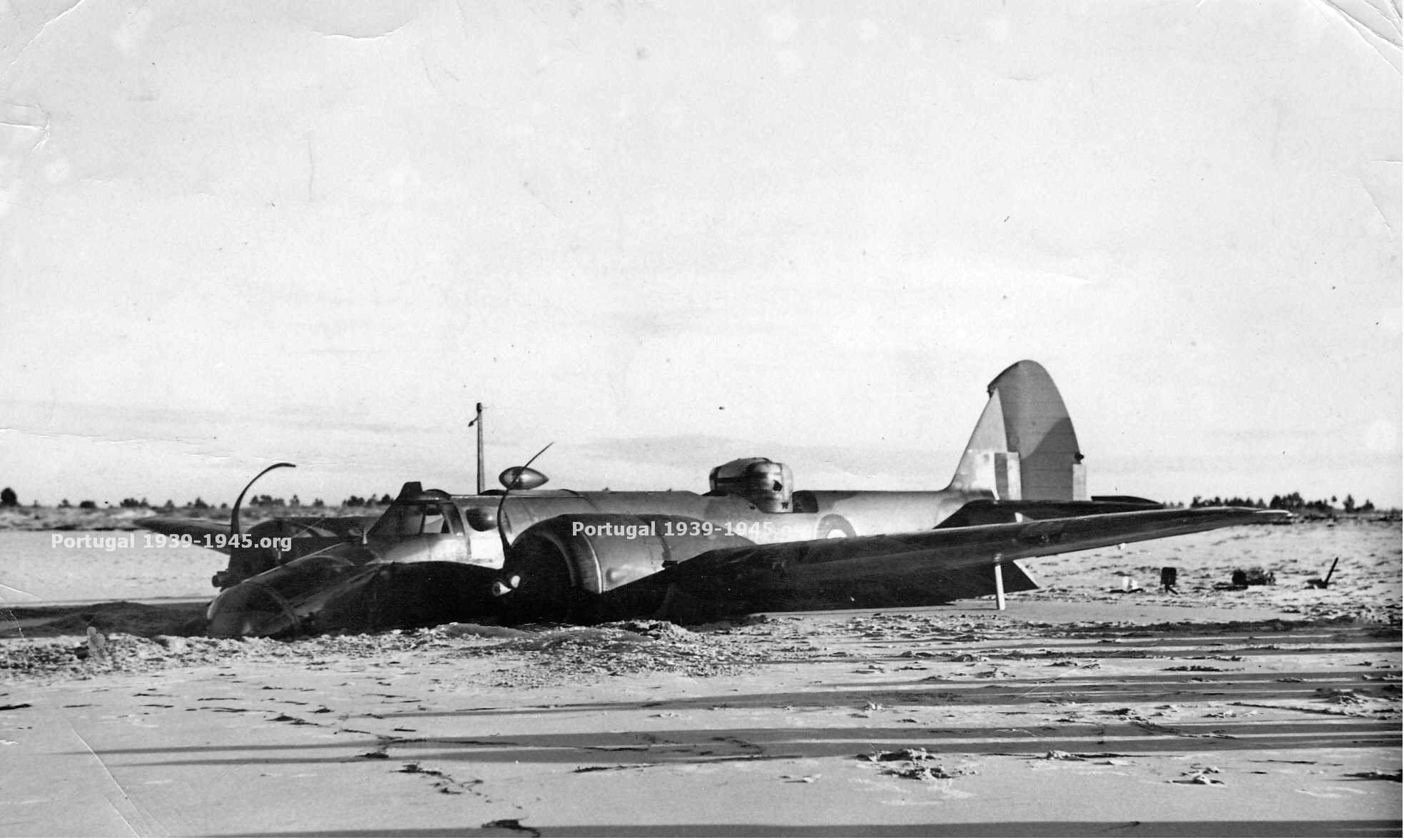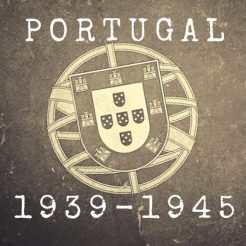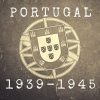
O Bristol Blenheim depois de chegar à praia
(Foto: Rex Walton)
Data/ Date
Local/ Location
Força/ Force
Avião/ Aircraft
Origem-Destino/ From-To
Tripulação/ Crew
14-02-1941
Tróia
RAF 95 Sqn
Short Sunderland I P9623
Pembroke Dock (UK) → Gibraltar → Freetown (Sierra Leone)
Sgt Jack Banfield NZ
F/Lt. Evison NZ
S/Ldr Pat Lombard NZ
F/O Bowie NZ
Ginger Ashcroft
Jim Thomas
Joe Tanner
Charlie Fry
Eddie Edwards
Apanhado por um violento ciclone aterrou de emergência também devido à escassez de combustível. Tripulação foi repatriada a 23 de Março de 1941. Foi a primeira vez que aviadores abandonaram o país, o que aconteceu sob supervisão de um oficial piloto português. O Major António Dias Leite, sob o cobertura de "altas autoridades" organizou a fuga por mar através de Aveiro. O avião foi oferecido a Portugal pelos britânicos em Maio de 1942. Foi integrado na Aeronáutica Naval com a matrícula AN 136, onde prestou serviço depois de reparado. Em Março de 1944, num voo com destino à Guiné, o hélice do motor interior do lado direito soltou-se e danificou também o motor exterior. O incidente aconteceu perto das Canárias mas o Capitão-de-Mar-e-Guerra Paulo Viana conseguiu regressar a Lisboa apenas com dois motores. Não voltou a voar e foi abatido da frota no ano seguinte.
The fight against a strong storm exhausted the aircraft's fuel and they had to ditch. The crew was repatriated on the 23 March 1941. This was the first time that British airmen left the country, under the supervision of a Portuguese air officer. Major António Dias Leite, asked by the British Embassy and under the supervision of "higher authorities", organized the escape by sea trough Aveiro. The plane was offered to Portugal in May 1942 and it became AN 136 of the “Aeronáutica Naval”, the air branch of the Portuguese Navy. In March 1944 it lost one propeller and another engine on the way to the Portuguese Guinea. The accident happened near the Canaries islands but the pilot - Capitão-de-Mar-e-Guerra Paulo Viana – was able to bring the aircraft back to Lisbon with only two engines. It never flew again and was scrapped in the next year.
Fontes/ Resources:
* “Aviões da Cruz de Cristo” – Mário Canongia Lopes
* Sopwiths to Sunderlands: 210 Squadron 1917-1941 - John Evans
* 95 Sqn Operational Record Book
* Maria José Dias Leite
* Olinda Couceiro

